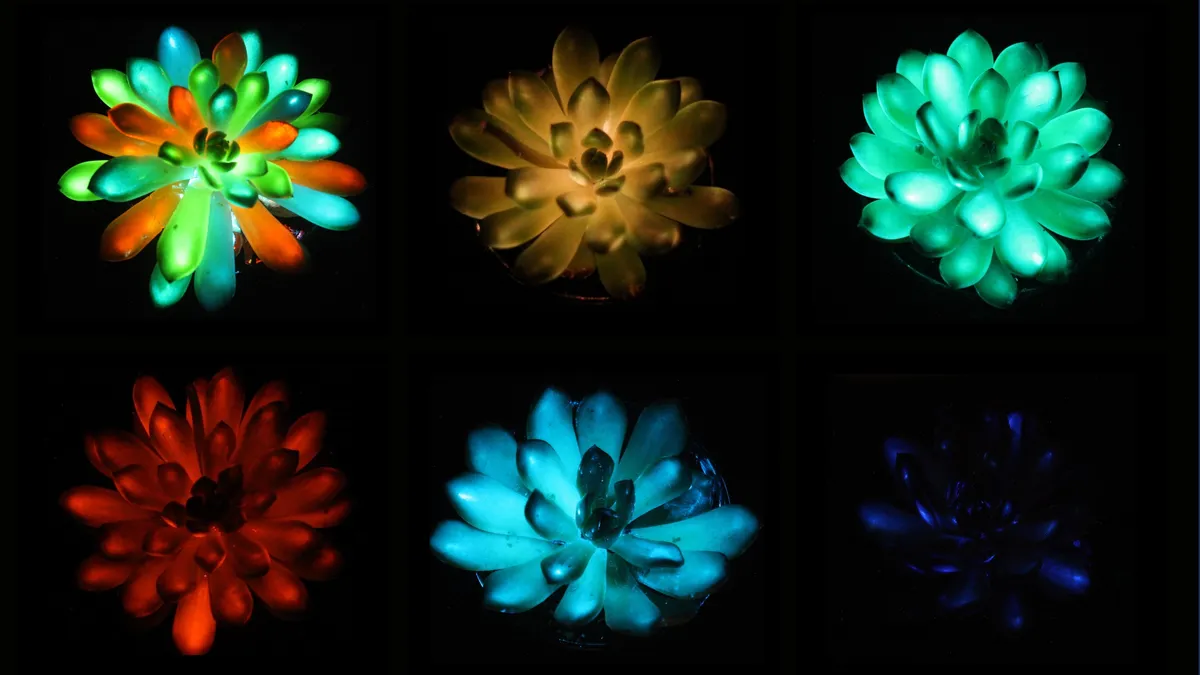
In a groundbreaking development, scientists in China have successfully created glow-in-the-dark succulents by injecting colorful phosphor particles into the leaves. These particles absorb light and gradually release it, resulting in vibrant, luminescent plants that shine for up to two hours. This impressive feat not only outperforms similar, material-engineered plants but also introduces a new frontier in sustainable lighting solutions, according to a recent study led by researcher Shuting Liu from South China Agricultural University.
Imagine walking through a park illuminated by glowing trees instead of traditional streetlights. This vision is becoming a reality as researchers explore the potential of plant-based lighting solutions. Liu stated that the new luminescent succulents could revolutionize how we light our outdoor and indoor spaces. The particles used in this innovative process diffuse through the plant leaves in mere seconds, causing the entire leaf to emit a captivating glow.
Researchers have previously experimented with glow-in-the-dark plants through both genetic and material engineering approaches. Genetic methods utilize bioluminescent genes from specific organisms, such as phytoplankton, but these typically produce a limited spectrum of colors, primarily green. Conversely, material engineering methods have involved injecting light-emitting particles into plant leaves, but they have traditionally resulted in dim light outputs.
To achieve strong luminescence, particles must be small enough to diffuse through plant tissues yet large enough to emit visible light. Earlier experiments with nanoparticles derived from firefly luciferase resulted in only a faint glow that diminished significantly after 30 minutes. In contrast, Liu and her team employed micron-sized phosphor particles, approximately the width of a human red blood cell (6 to 8 micrometers), that effectively traveled through the plants while producing a vibrant glow.
The study, published in the journal Matter on August 27, highlighted that while micron-sized particles worked exceptionally well with Echeveria Mebina succulents, they did not yield similar results with other plants, such as bok choy (Brassica rapa chinensis) and golden pothos (Epipremnum aureum). The unique structure of Echeveria Mebina, which features larger gaps between cells, allowed for the free movement of these particles, facilitating the glow-in-the-dark effect.
Researchers injected phosphor particles into the leaves of Echeveria Mebina and charged the plants using either sunlight or indoor LED light for a few minutes. The outcome was the same in both scenarios, with the green particles providing the longest glow duration, rivaling a small night lamp at their peak brightness.
In a remarkable achievement, the team produced the world's first multicolored luminescent plants by injecting blue, green, red, and blue-violet phosphor particles into the leaves of the succulents. They even constructed a plant wall consisting of 56 succulents that emitted enough light to illuminate nearby objects and allow for reading in the dark. Liu expressed her amazement at how seamlessly human-made micro-scale materials can integrate with the natural structure of plants, describing the interaction as almost magical.
The potential of these luminescent succulents extends beyond aesthetics; they could represent a significant step toward low-carbon lighting solutions. The researchers aim to replicate this glowing effect in various other plants, allowing them to charge up from sunlight and provide decorative and practical illumination. The process is straightforward, cost-effective, and achieves luminescence within just 10 minutes, setting the stage for practical applications in plant-based lighting.